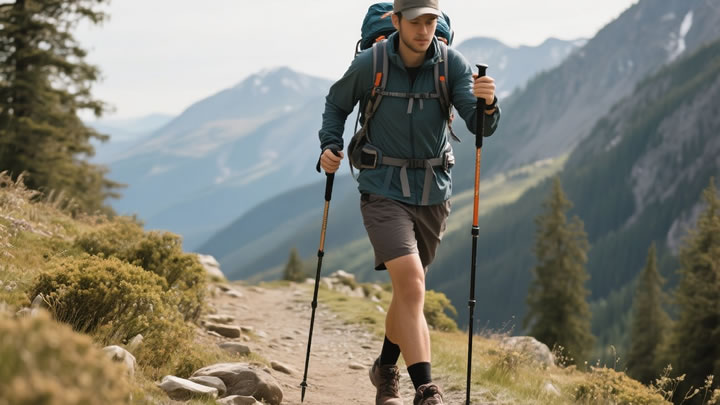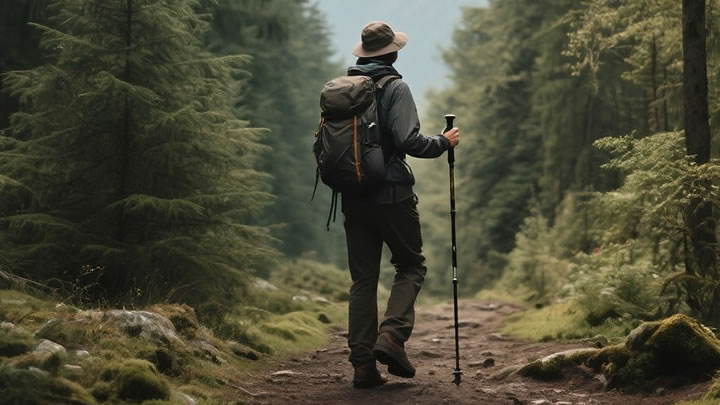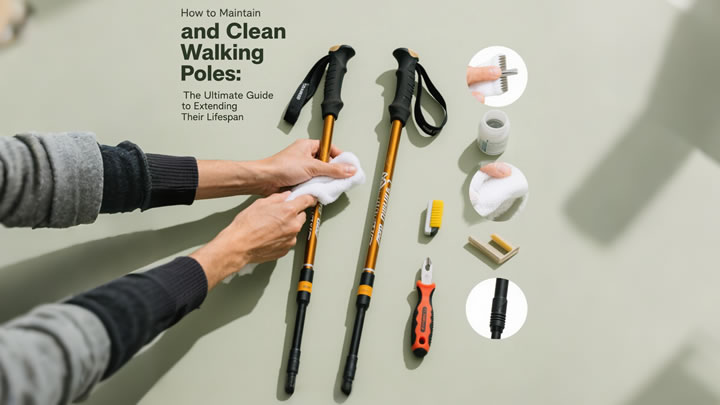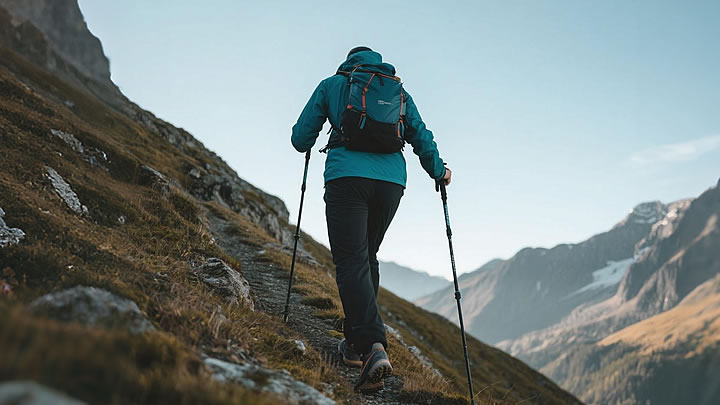How to Walk Downhill with Trekking Poles? Mastering the Art of Controlled Descent
For many hikers, downhill sections represent the most challenging and punishing part of any trail. The relentless impact can jar the spine, strain the ankles, and deliver tremendous compressive forces to the knees. However, with the correct use of trekking poles, you can transform a painful, cautious descent into a controlled, confident, and safe experience. Mastering downhill technique is not just about avoiding a fall; it's about protecting your joints for a lifetime of hiking.
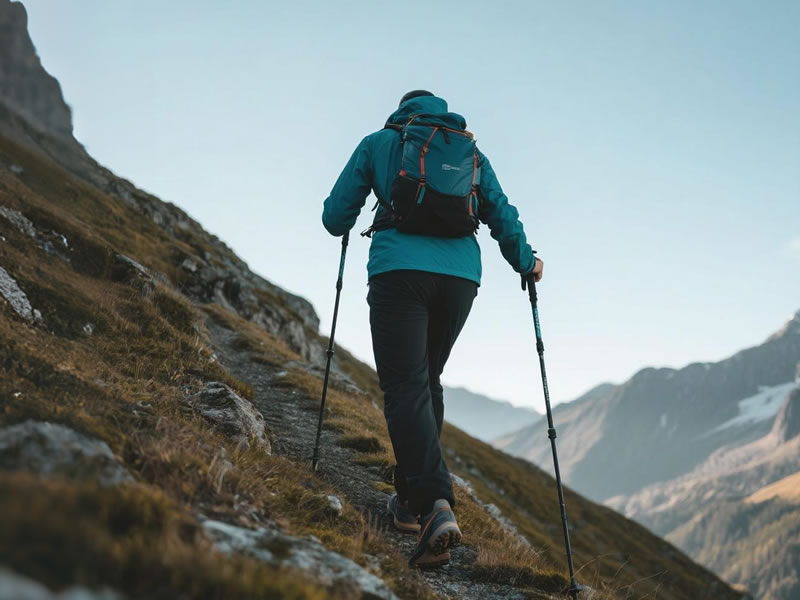
The Core Principle: Braking and Weight Distribution
The fundamental goal when walking downhill with poles is to use them as proactive braking and stabilization tools, not just as balancing aids. The key is to shift a significant portion of your body weight and the impact forces into your arms and the poles, thereby "unloading" your lower body.
Step-by-Step Downhill Technique
- Lengthen Your Poles (The Most Critical Step):Before you begin your descent, adjust your poles. Lengthen them by 5-10 cm (2-4 inches) from your standard flat-ground length. This extension is crucial because it allows you to plant the poles securely on the slope ahead of you without having to bend your upper body excessively. A longer pole facilitates an effective forward plant and a more powerful braking action.
- Adopt a Slight Forward Lean:It is counterintuitive, but leaning slightly forward from the ankles is safer than leaning back. Leaning back shifts your center of gravity too far behind your feet, increasing the risk of slipping outwards. A forward lean keeps your weight centered over your feet, ensuring your soles maintain solid contact with the ground. Keep your torso upright relative to the slope, not vertical to the world.
- The Pole Plant: Ahead and Below:Plant your pole tips firmly on the slope ahead of you and below your body. The exact distance will vary with the steepness, but a good rule is to aim for a point where, once planted, your arm is comfortably extended but not overstretched. The poles should form a backward angle, not be vertical. This angled plant is what creates the braking force.
- The Controlled Descent: The "Tripod" of Stability:As you step down, consciously transfer weight onto the poles. Your two poles and your leading foot should form a stable "tripod" before you commit your full weight to the step. Use your arms and shoulder muscles to lower yourself down controllably, rather than just letting gravity pull you. The poles are now bearing a substantial part of your weight.
- Maintain a Rhythmic Flow:Establish a steady rhythm: plant the poles, take one or two controlled steps, then re-plant the poles further down the slope. This creates a continuous, fluid motion. Avoid the "stabbing" motion of planting both poles simultaneously with each step, which can disrupt your flow.
Pro Tips for Enhanced Safety and Efficiency
- Short, Deliberate Steps: Take smaller steps than you would on flat ground. This gives you more control and reduces the impact of each individual step.
- Engage Your Core: Tightening your core muscles provides additional stability and helps you maintain balance over your feet.
- Test Suspicious Footing: Before committing your weight to a loose rock or a slippery root, use a pole to gently tap it and test its stability.
- On Very Steep or Loose Terrain (Scree): You can use a technique where you plant both poles together for a powerful double-brake, then take several quick, small steps down to them before replanting.
Common Mistakes to Avoid
- Poles Too Short: This is the most common error, forcing you into a hunched posture and rendering the poles ineffective for braking.
- Leaning Back: This creates instability and puts excessive strain on your quadriceps and knees.
- Letting the Poles Drag: Each pole plant should be intentional and weight-bearing. Dragging poles creates noise, wears down the tips, and provides no benefit.
- Over-Gripping: Hold the grips firmly but without a "death grip." Let the wrist straps bear the majority of the load to prevent hand and forearm fatigue.
The Payoff: Protect Your Knees and Boost Confidence
Research has shown that using trekking poles correctly can reduce the forces on the knees during descent by up to 25%. This is not just about comfort; it's about long-term joint health. By mastering the downhill technique, you equip yourself with the skills to tackle longer, steeper trails with confidence, knowing you have the tools to manage the descent safely and comfortably. Your poles are your partners in control—use them wisely, and you will unlock a new level of downhill proficiency.

